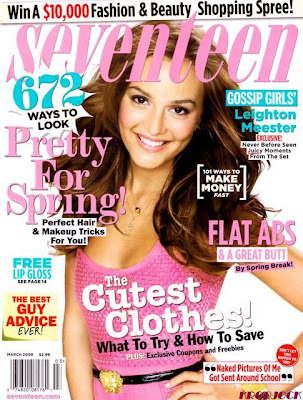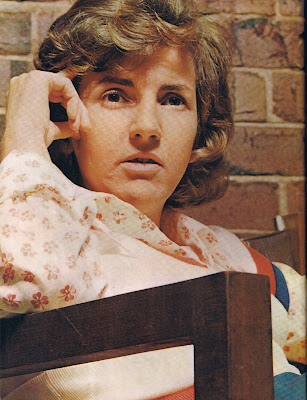Way back in the 80s, before the word 'brand' was used in reference to people as well as laundry detergent, the members of Ann M Martin's Baby-Sitters Club practised an entirely different brand of girl-power to Lady Gaga. They were entrepreneurs.
This, as noted by Lara Vanderkam in The
 Wall Street Journal, taught girls that you could create your own job and emancipate yourself from your parents' (or employer's) pockets, all the while giving back to your local community and making friends. It's a career ethos I've always believed in, but was never conscious of why until now!
Wall Street Journal, taught girls that you could create your own job and emancipate yourself from your parents' (or employer's) pockets, all the while giving back to your local community and making friends. It's a career ethos I've always believed in, but was never conscious of why until now!At a time when celebrity appears to be the top currency for success, and we're considering the shortfalls of feminism, it's heartening to be reminded that it's possible to beat your own path with a little ingenuity and determination. Re-reading The Truth About Stacey last night, I discovered the founding foursome of Kristy (president), Claudia (VP), Mary Anne (secretary) and Stacey (treasurer) getting their first taste of competition.
I was so impressed with the way the girls handled the situation, I thought I should share some of their tips. But first, a bit of back-story for non-BSC readers about the Club from Stacey*:
"We've been in business for about two months. Kristy thought up the club, which is why she got to be president. We meet three times a week from five-thirty to six o'clock in Claudia's room (Claudia has a private phone), and our clients call then to line us up as sitters. The reason the club works so well is that with four baby-sitters there at the phone, each person who calls is pretty much guaranteed to get a sitter for whatever time he or she needs. Our clients like that. They say that having to make a whole lot of calls just to line up one sitter is a waste of time. They like us, too. We're good baby-sitters. And we worked hard to get our business going. We printed up fliers and distributed them in mail boxes, and even put an ad in The Stoneybrook News, the voice of Stoneybrook, Connecticut." I love how she refers to the parents as "clients" - so professional!
1. Service your customers
The book opens with the girls debating how they're going to handle the impending birth of a baby to a regular client, who has a son. Kristy wants to ensure that one of the sitters is available to step in to look after Jamie by ensuring that at least one of the girls is available each afternoon ("It will be a special service for her since the Newtons are such good customers").
2. Be proactive in the face of competition
When Claudia's sister shows the girls a flier being distributed by a competitor club (The Baby-Sitters Agency), Kristy whips into action: "I hereby change this meeting of the Baby-sitter's Club to an emergency meeting."
3. Know your competitor; perform a SWAT analysis
The Baby-sitters Agency has one major advantage: they are older and can therefore stay out later. They also have a better promotional flier. When Mary Anne calls the Agency under a pseudonym, she discovers that they commission out jobs to high-school kids and take a cut of their earnings ("We don't offer a range of ages like they do. There are no boys in our club. And we can't stay out past ten, even on the weekends," says Kristy.) But Claudia knows the girls and isn't a fan: "They have smart mouths, they sass the teachers, they hate school, they hang around at the mall."
4. Strategise and put it to the team
Kristy comes up with a list of ways to improve their business, including:
- doing housework at no extra charge
- special deals for the best customers
- creating Kid-Kits to take to appointments filled with kid-friendly projects, toys and things ("we'll be like a walking toy store")
- lower rates
- take on late jobs and give them to older kids
5. Don't compromise your brand values; your staff want to believe in something
Claudia is defiant: "The Kid-Kit is a good idea, but lower rates and housework and giving away our jobs? No, no, no. If that's what this club is going to become, then I don't want to be in it." The girls resolve to implement the Kid-Kit and special deals, but use Kristy's other ideas only as a last resort. The girls are motivated to work on their Kid-Kits.
6. Focus on building customer relationships
While the Agency starts handing out red helium balloons in public, the Club girls focus on one-on-one time with their young charges. Stacey takes little Charlotte on an excursion and hosts a Big Brother Party for Jamie. The parents are happy because the kids are happy. "A good baby-sitter spends time with the children she sits for," says Stacey. "She doesn't ignore them or talk on the phone or just watch TV all the time."
7. Don't play lowest-common-denominator tactics
Kristy is incensed by the Agency's latest recruitment drive - setting up a stall in the middle school – so she enlists two former Agency girls to work on her staff, only the girls' loyalty hasn't shifted. She is royally annoyed after the new girls fail to show up to their appointments and faces the wrath of the parents for her poor character judgement. Lesson learnt: vet your staff and don't lower yourself with last-ditch tactics that always backfire.
8. Know your clientele
Got to hand it to the Club girls for knowing the particulars of the children they care for: allergies, favourite foods and TV programs, changes in mood. This attention to detail gives them the edge.
9. Respect opinions but focus on one goal
Though the girls have differing ideas and personalities (Claudia is often the first to disagree with Kristy), they're all working together towards the same goal: providing quality sitting for parents and their kids. "We're all different, but our differences work together to bring out the best in each of us... which, of course, helps make us good babysitters," says Kristy.
10. Anticipate the market
By the end of the book, the girls are starting to generate regular business again, but this is no time to rest on their laurels. "With Christmas so close, everybody is going to parties, dinners, concerts... This may be our busiest season," says Kristy. Smarty pants.
In the end the girls learn that all the fancy fliers, clever slogans and recruitment drives aren't enough to sustain a business lacking in integrity. "It's been tough but we hung in there and beat out the agency," says Stacey. "More important," adds Kristy. "We beat them because we're good baby-sitters." Now that's a lesson a few grown-up businesspeople could do to learn.
Yours truly,
Girl With a Satchel





































